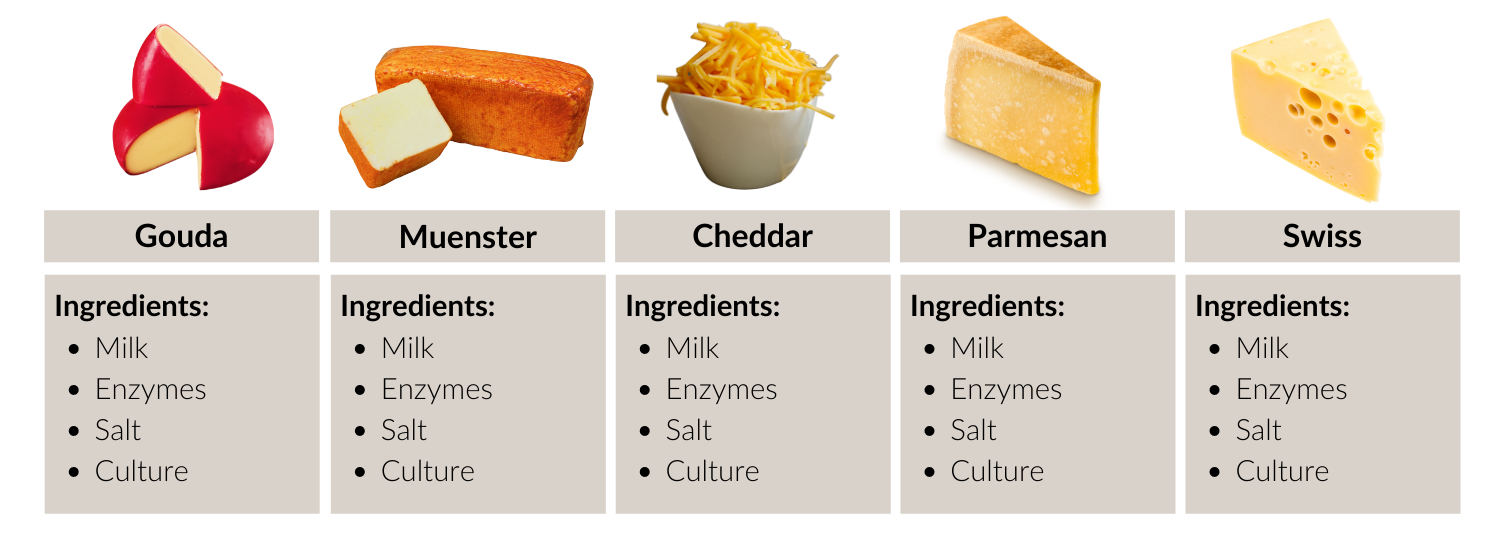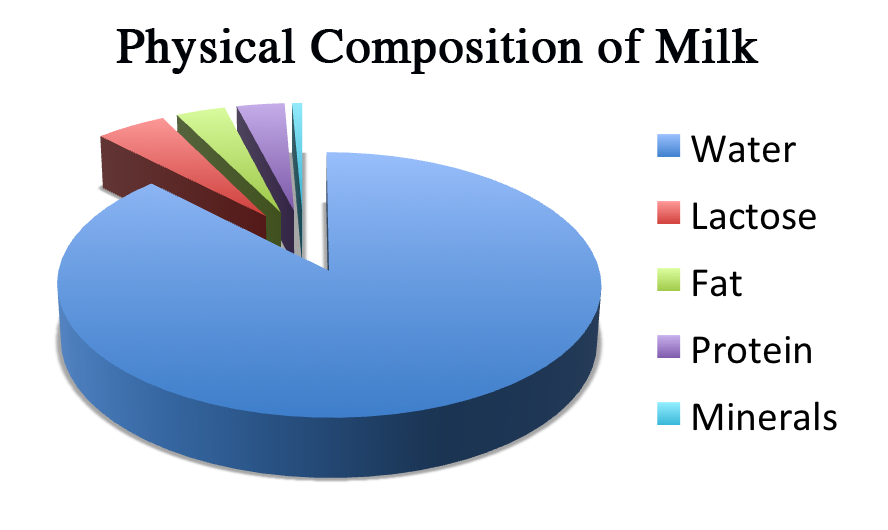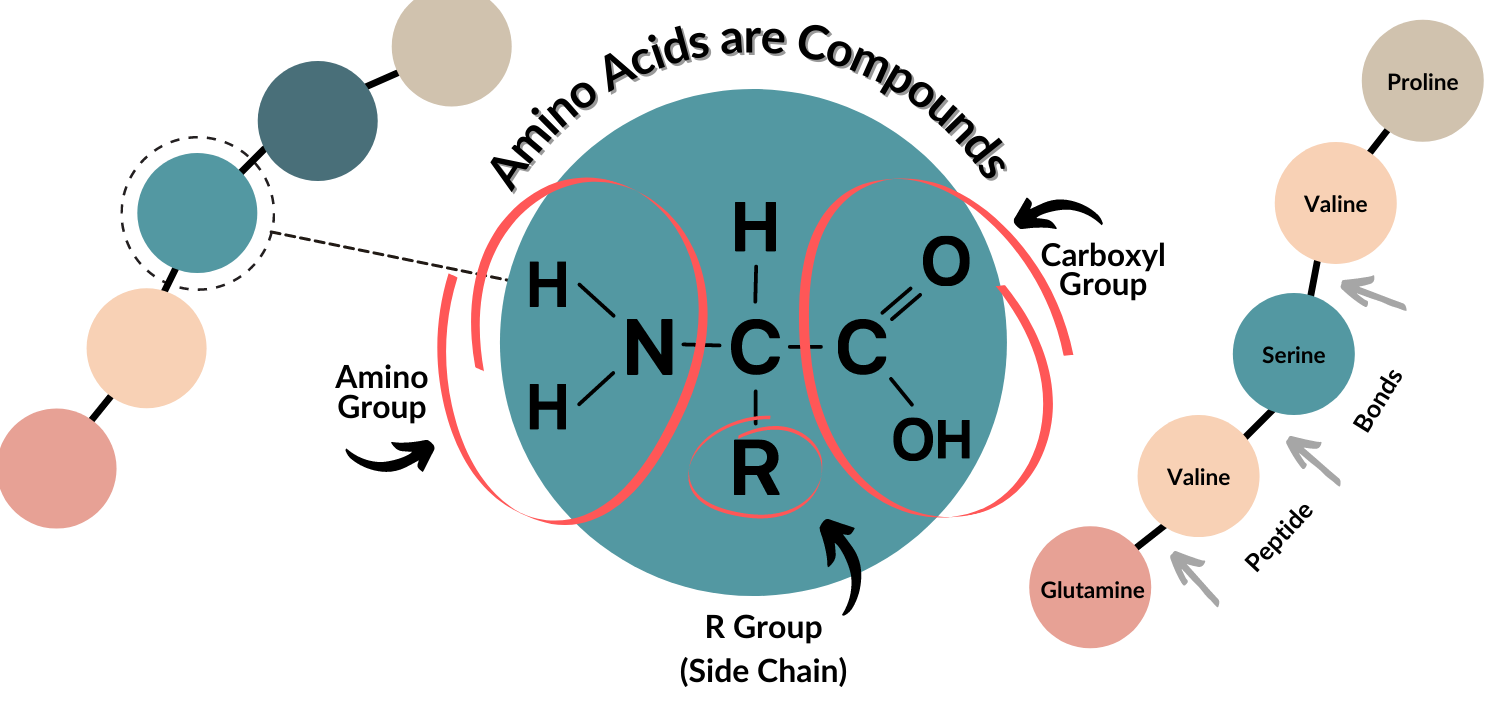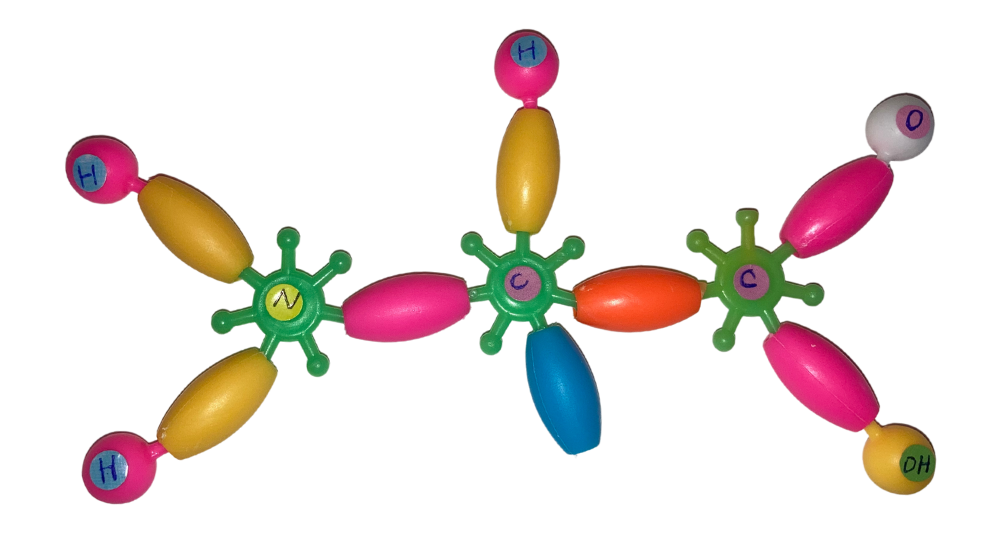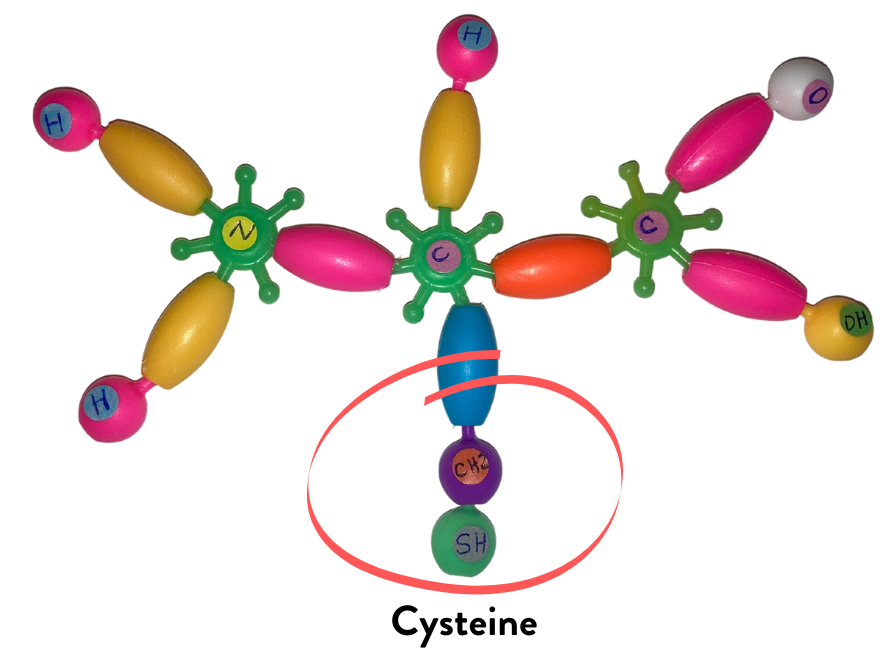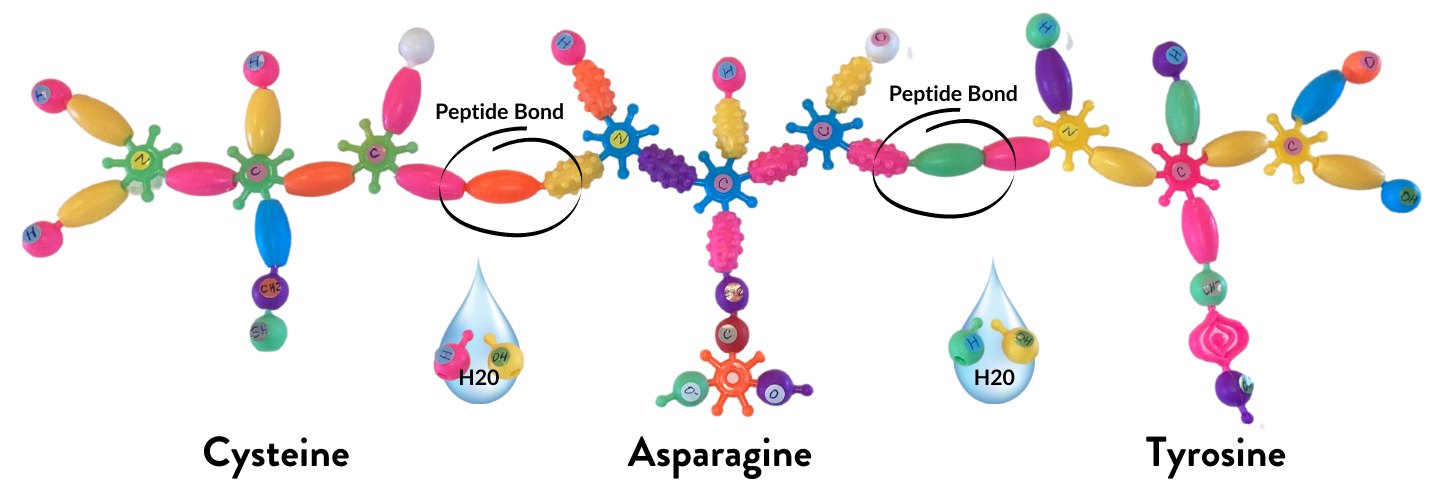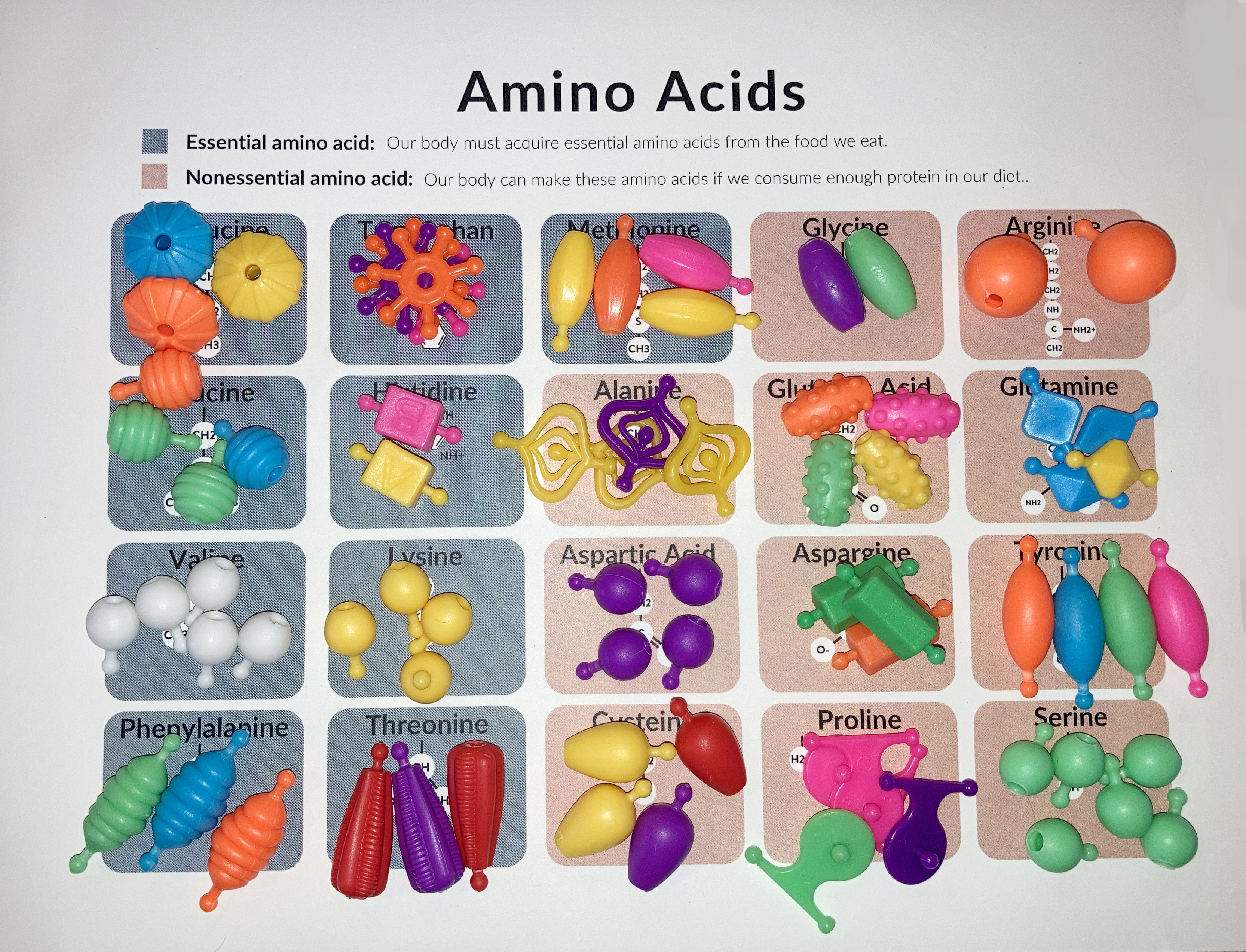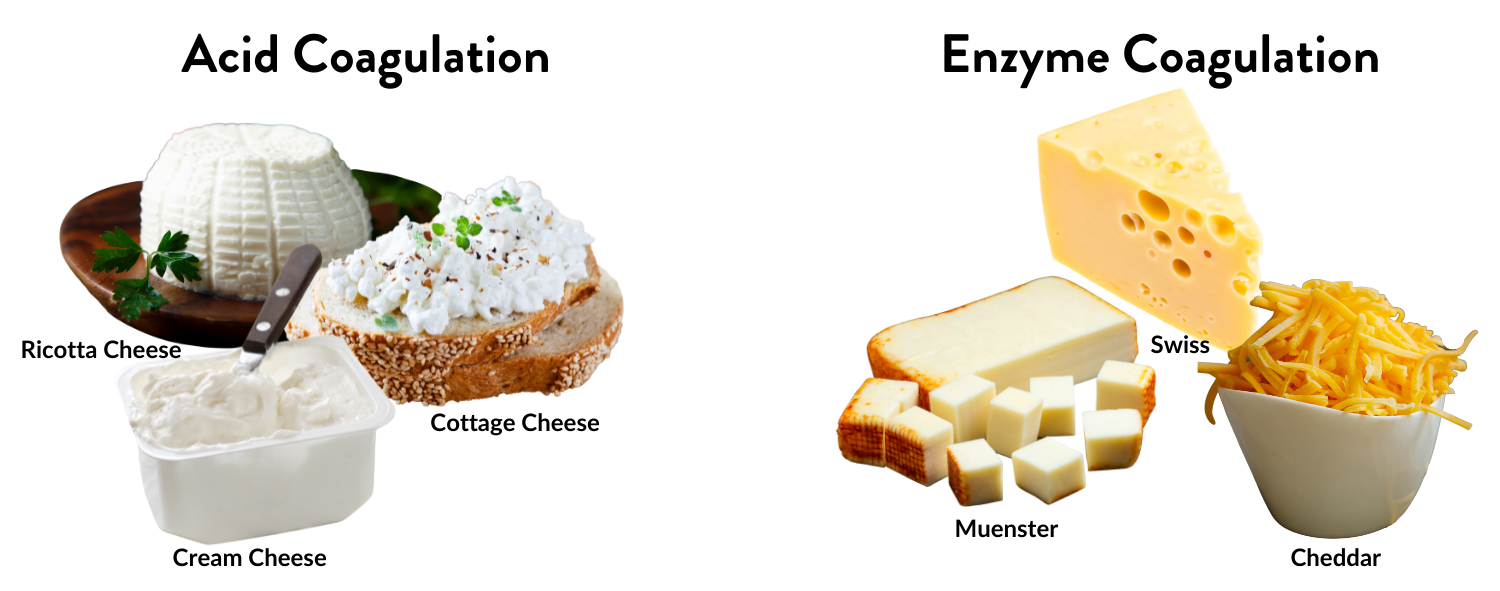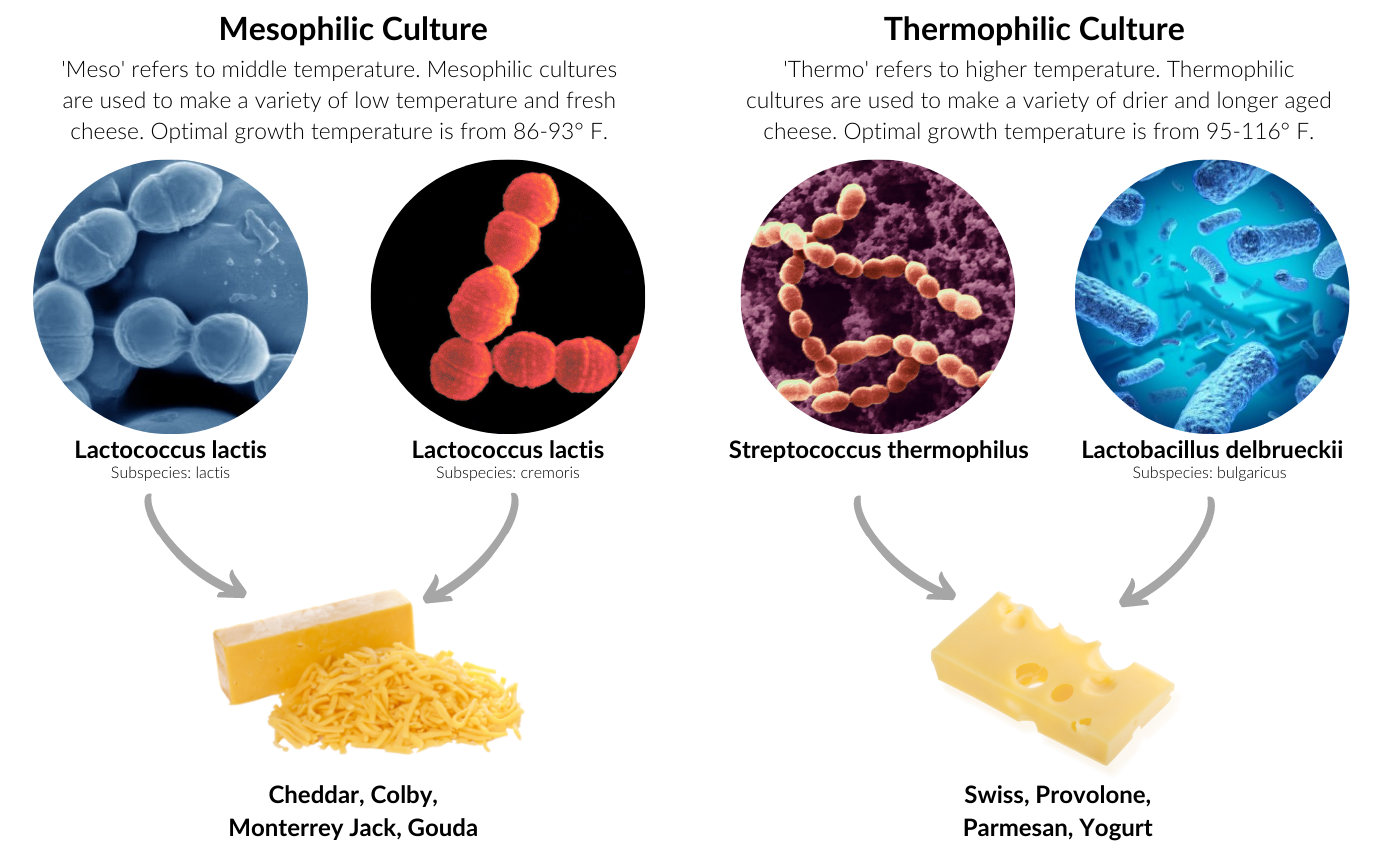This lesson can be nested into a storyline as an episode exploring the phenomenon of how science is used in the production of food. In this episode, students investigate the question, "Why does each variety of cheese taste different when the ingredients are the same?" Phenomena-based lessons include storylines which emerge based upon student questions. Other lesson plans in the National Agricultural Literacy Curriculum Matrix may be used as episodes to investigate student questions needing science-based explanations. For more information about phenomena storylines visit nextgenstorylines.org.

Proteins and Amino Acids
One protein can contain hundreds of amino acids that are joined with peptide bonds and are characterized by their two functional groups (the amino and carboxyl group). The functional groups are what determine the protein properties and how it will respond in different situations. The structure and bonds of the protein determine if the protein is soluble, how it reacts in different pH solutions, and how heat, agitation, and ultraviolet light will change the protein’s physical structure. These physical alterations can cause the protein to go through a process called denaturation, which essentially relaxes the structure of the protein from looking like a ball, to more like sheets. This exposes more of the protein’s functional groups and new bonds can form as the protein begins to coagulate, or clump together. Denaturation happens frequently when preparing food to eat. For example heat agitates the protein in eggs and causes the proteins to denature and coagulate together to form the solid egg that we eat.3
Enzymes can be used to promote chemical reactions in the proteins contained in food. An enzyme has an active site which must temporarily lock with the substrate (food) and cause the chemical reaction to occur. Since an enzyme is a protein, it is important to consider the temperature and the pH level of the food you are adding it to so that you don’t prematurely denature the enzyme and make it so it can no longer cause the desired reaction. Conversely some cooking processes are desired so that it does inactivate enzymes (ie blanching vegetables that are to be frozen to inactivate the enzyme that causes the vegetable to age or deteriorate).3
Microbes, Bacteria, and Cultures
Microoganisms or microbes are everywhere and are classified as bacteria, viruses, protozoa, or fungi. These organisms can be beneficial, neutral, or harmful to humans. In food, some of them can cause food borne illnesses which can make us very sick, or cause our food to spoil. The growth of bacteria in food is controlled through keeping clean surfaces and equipment and manipulating the following conditions since bacteria will thrive or die in different environments: changing the temperature, water activity, pH, and oxygen level.5 Microbes are used in the production of many delicious foods including cheese, kimchi, yogurt, chocolate, kimchi, bread, beer, and wine. The microorganisms transform the natural sugars and proteins in food to yield very different tastes and textures that we enjoy.6
Origin of Cheese
Cheese is one of many products made from milk. The exact date of origin for cheese is unknown, but it has been found in Egyptian tombs and murals from 4,000 years ago. It is thought that cheese was discovered by accident when it was common to store milk in a container made from an animal stomach. The enzyme, rennet, is found in ruminant stomachs. When added to milk, it causes the milk to coagulate and separate curds (solid proteins) from whey (liquid). This means when someone would store milk in a ruminant stomach (a common practice before glass and plastic), their milk would turn to fresh cheese.
Today, the art of making cheese has become much more technical.7 Now there are hundreds of cheese varieties which can be grouped into eight categories including blue, hard, pasta filata, processed, semi-hard, semi-soft, soft and fresh, and soft-ripened.8 Currently more than one-third of all milk produced each year in the United States is made into cheese.9
Cheesemaking Process
The cheesemaking process uses science and chemistry to remove whey and liquid from milk to form a curd (cheese).3 Along with a vast array of cheese types, there is also a variety of cheese-making processes. Each process shares the same basic components:
- Milk: All cheese is made from milk. In the United States, milk from cows is most common. However, many specialty cheeses are made from the milk of sheep, goats, and other mammals. Milk is composed of varying amounts of carbohydrates (lactose), fat, protein (casein and whey), vitamins, and minerals.
- Additives: Frequently cheddar cheeses have an orange food coloring, anoto, added to the milk. Calcium can be added which will change the texture. Mold can be added for a variety like bleu cheese. The most common enzyme used to make cheese is Rennet. Rennet causes the milk to coagulate and is used to make hard cheeses.5 It helps the milk mixture separate the forming curds from the whey. Rennet splits off the hydrophilic portion of the casein micelles so it will no longer stay suspended in the aqueous solution of milk. Instead, the casein aggregates together to form the curds, while the whey (or liquid portion) separates.3
- Bacterial Cultures: Chemical changes in milk can be triggered using bacterial cultures. The use of beneficial bacteria creates chemical responses in the cheese to enhance specific flavors. Bacteria, yeast, and filamentous fungi (molds) are all used in the cheesemaking process which results in a wide variety of flavors and textures of cheese. Sugar and lactose is broken down by lactic acid bacteria through a process called fermentation. Fermentation happens naturally, but it is common for cheesemakers to use starter cultures to help this process be more consistent. The formation of lactic acid is very important because it lowers the pH of the milk, helps the proteins change structure, and promotes the coagualation of the casein.6
- Acid: Soft cheeses are made by adding a type of acid to milk to make it coagulate. Citric acid and vinegar are two examples of acids used in the cheesemaking process. The acid is important to lower the pH of the mixture. In other cheeses the cultures are used to decrease the pH.
- Time: Some cheeses can be made in a short amount of time and others require aging to develop the proper flavor, texture, and moisture levels. The ripening or aging process of the cheese is the second period when bacteria start to grow within the cheese and on its surface, sometimes forming a rind. As these microorganisms grow it contributes to enzymatic activities that result in various byproducts that affect the color, flavor, texture, and look of the cheese. The cultures that were added to the cheese at the very beginning, and how long the cheese is aged determine how much the bacteria alter the end result of the cheese. The growth of the microbes are controlled through the temperature and addition of salt to the milk mixture. Some microbes like warmer or colder temperatures and some activate or inactivate in the presence of salt.6
- Heat: Precise temperatures allow the enzymes and bacterial cultures to work properly in the cheesemaking process by allowing the beneficial bacteria to do its work.5 Bacteria, or the starter cultures in cheese are classified as mesophilic (temperate loving), or thermophilic (heat loving) based on their preferred temperature for growth.6
- Salt: Salting helps draw out additional moisture in the cheesemaking process. It also plays a huge role in the flavor of cheese.


